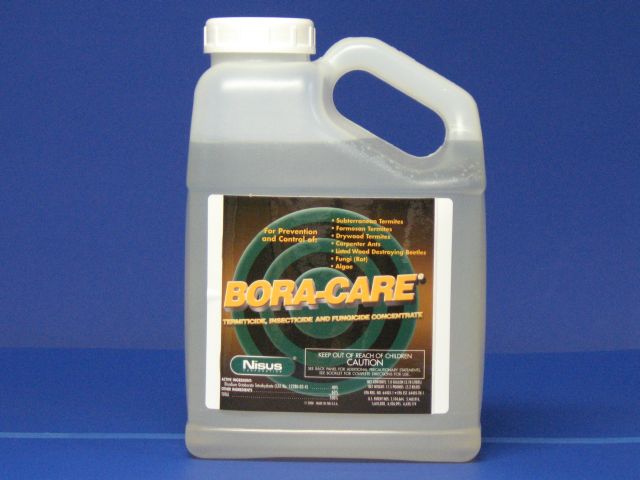Reducing Leaching of Boron-based Wood Preservatives – A Review of Research
Inorganic Boron-Based Preservatives – An Excellent Wood Preservative
Inorganic borates offer good protection to timber in most non-ground contact applications. The effective use of low solubility borates has not yet been achieved in the treatment of solid lumber. Interest in reducing the leaching of borates stems from their favorable environmental characteristics and broad spectrum efficacy. The key to extending the use of borates to cover the entire spectrum of wood preservation is improving their permanence in wood while retaining efficacy by retaining limited mobility of the borate. We reviewed research over the last two decades in laboratories around the world and classified all strategies employed into fifteen categories.
Because of its favorable environmental characteristics, wood preservation researchers have refocused on boron in the last two decades. Current standards (AWPA, 2007) allow for the use of borates in above-ground environments protected from rain wetting. Due to their broad spectrum fungicidal and insecticidal action, borates are considered more effective preservatives than copper and zinc, with the later two performing better only because of their fixation in wood, not their inherent fungicidal activity (Lloyd et al., 2001). Data on the leaching of borates has been gathered over the last 50 years. Inorganic boron systems offer adequate protection to lumber in protected non-ground contact situations and more especially building applications (Williams, 1990, 1996; Williams and Amburgey, 1985). Years of field research in Hawaii and Japan support the conclusion that inorganic borates provide long term protection for structural timber (Grace et al., 2006; Tsunoda et al., 2006). Loss of borates occurs to a serious degree only when timber remains wet throughout its cross-section for long periods while also having an external sink for boron migration. A reduced loss rate occurs as retention approaches a level too low to drive diffusion. This occurs above the toxic limit for decay (Drysdale, 1994; Lloyd, 1995; Williams, 1996). The solubility and mobility of borates allows them to treat wood species that are difficult to treat with copper-based preservatives. Even when not applied on the whole cross-section, they redistribute by diffusion if sufficient moisture is available in wood to provide one of the most effective preservation systems available today (Lloyd, 1995; Lloyd and Manning, 1995; Peylo and Willeitner, 1999).
Trade-Off Between Leaching and Mobility
The balance between the disadvantages of preservative leaching and the benefits of preservative mobility is now more widely understood. As borate systems have expanded in use, efforts have continued to reduce leachability (Manning et al., 1997). Several strategies to reduce leaching and increase the potential range of products to cover the entire spectrum of wood preservation have been proposed. Previous reviews of boron compounds suggest that their future lies in the search to fix them within treated timber (Nicholas et al., 1990; Lloyd, 1995). A fixed preservative is described as one which when introduced in wood, satisfies the relevant leaching standard e.g. AWPA E11-97 (AWPA, 2007) and subsequent efficacy tests required for standardization.
A treatment may not necessarily react with wood to meet these criteria (Lloyd et al., 2001). Previous studies show that while fixing boron may prevent leaching, it may lock the boron resulting in loss of biological efficacy (Lloyd et al., 1990). Preservative properties of borates are primarily due to the tetrahydroxyborate ion [B(OH)]4- ion formed upon exposure to water. The ion complexes with polyols of biological significance in wood destroying organisms through extracellular and intracellular substrate sequestration, enzyme inhibition, and change in membrane function. When the borate is complexed or immobilized, it has no effect on biological efficacy (Lloyd et al., 1990; Lloyd, 1998). Research has therefore been directed to partial fixation systems which conserve sufficient mobility to maintain preservative action (Pizzi and Baecker, 1996; Thévenon et al., 1999). Formulation of borates in forms other than simple inorganic aqueous solutions is beginning to develop. Strategies that have been proposed or studied are listed in Table 1 and discussed in the following sections.
Source: Diana N. Obanda, Todd F. Shupe, H. Michael Barnes. 2008. Reducing leaching of boron-based wood preservatives – A review of research. Bioresource Technology 99 (2008) 7312–7322.
For more information on borate treated wood, visit Nisuscorp.com
Click here read the entire manuscript: Reducing leaching of boron-based preservatives – A review of Research
Meet the Author
Dr. Todd Shupe is the President of Wood Science Consulting, LLC. He is a well-recognized expert on wood forensics, wood preservation, wood decay and degradation, and wood species identification. He has a broad background in new product development, quality management, and marketing and sales in both the public and private sectors. For more information please visit DrToddShupe.com.
We welcome your comments below.
Thank you for visiting. We trust that you have enjoyed reading our articles.
Liked this post? Read more below or search for more topics . . .


